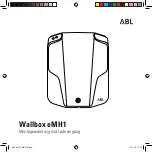
Cadillac CTS/CTS-V Owner Manual (GMNA-Localizing-U.S./Canada/Mexico-
9159276) - 2016 - crc - 10/5/15
Driving and Operating
195
courses. Inspect the tires prior to
every track session. Track driving
will reduce the tire tread life.
{
Warning
Operating the vehicle at high
speeds can be dangerous.
Improper tire inflation pressure
can put additional strain on the
tires and can cause a sudden
failure. Make sure the tires are in
excellent condition, and use the
correct cold tire inflation pressure
for the vehicle load and track or
course.
{
Warning
Track courses put high loads on
tires operating at high speed,
which can lead to tire failure if not
inflated properly.
Tracks with Sustained High-Speed
Operation on Banked Turns
(e.g., Daytona International
Speedway, Indianapolis Motor
Speedway, or similar)
Load Limit: Limit the vehicle to the
driver and one passenger, with no
additional cargo.
Tire Pressure Requirement: Inflate
tires to no less than 300 kPa
(44 psi) cold.
Tracks with Combined High-Speed
and High-Load Corners
(e.g., Nurburgring Nordschliefe, Spa
Francorchamps, or similar)
Load Limit: Limit the vehicle to the
driver and one passenger, with no
additional cargo.
Tire Pressure Requirement: Inflate
tires to no less than 260 kPa
(38 psi) cold and limit to 230 km/h
(143 mph) until 290 kPa (42 psi) is
reached.
Road/Street Courses
(e.g., Virginia International
Raceway, Road Atlanta, or similar)
Load Limit: Limit the vehicle to the
driver and one passenger, with no
additional cargo.
Tire Pressure Recommendation:
Hot: Target hot tire pressures to
270-280 kPa (39-41 psi). This is the
stable tire pressure reached after
approximately 15 minutes of
operation at maximum driver effort.
Cold: This value will vary based on
driving style, track, temperature, and
weather conditions.
Return the tires to the
recommended cold tire inflation
pressure when high-speed driving
has ended. See
Vehicle Load Limits
0
199
and
Tire Pressure
0
309
.
Driving on Wet Roads
Rain and wet roads can reduce
vehicle traction and affect your
ability to stop and accelerate.
Always drive slower in these types
of driving conditions and avoid
driving through large puddles and
deep-standing or flowing water.
Summary of Contents for 2016 CTS
Page 1: ......
















































